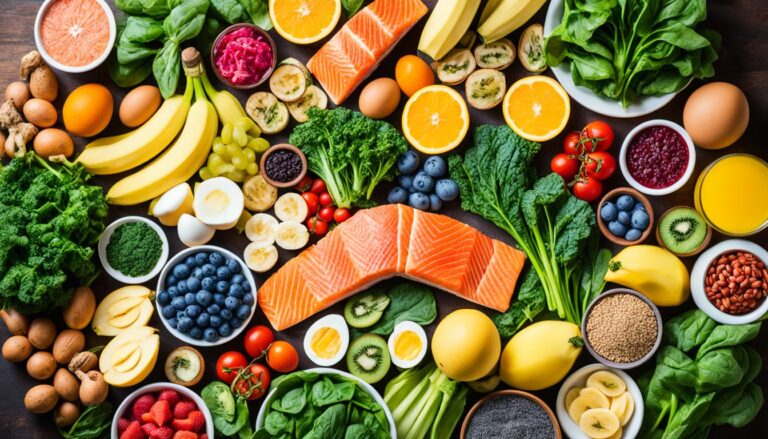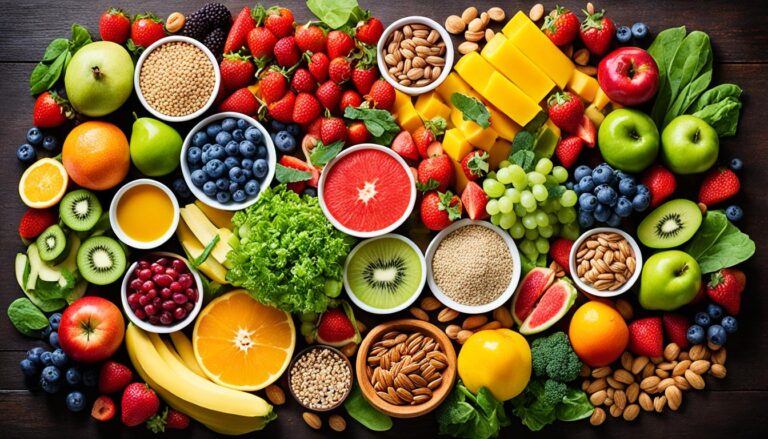What if the biggest boost to your weight loss isn’t another diet at all, but the hours you choose not to eat?
Across the United States many people feel burned out by strict meal plans and endless calorie math.
Early evidence suggests intermittent fasting may be more effective for weight loss than diets because it simplifies choices and may improve adherence. By focusing on timing instead of constant restriction this approach can raise the perceived effectiveness while reducing diet fatigue.
This article takes a practical professional tone and previews how intermittent fasting benefits may extend beyond the scale. We will outline popular methods, discuss safety, and highlight what randomized trials and meta analyses say about effectiveness. You will also see realistic timelines and strategies that fit everyday life.
If you want a flexible rhythm that can work with your schedule intermittent fasting offers a clear path. The goal is not perfection but a pattern you can sustain and measure over time.
Key Takeaways
- Intermittent fasting may be more effective for weight loss than diets by easing decision fatigue and improving adherence.
- Fasting focuses on when you eat which can support consistency and perceived effectiveness.
- Evidence from randomized trials and meta analyses in the United States points to meaningful intermittent fasting benefits.
- Popular formats like 16:8 and 5:2 offer flexible options for different schedules and goals.
- A professional tone guides safe practical use including hydration protein intake, and exercise.
- Realistic expectations and simple tracking help maintain momentum and long-term results.
What Intermittent Fasting Is and How It Works
Intermittent fasting for weight loss frames when you eat, not which foods you choose. Many people adopt it to simplify choices and improve effectiveness without strict tracking. The core idea is to align meals with biology and support steady energy balance.
Defining intermittent fasting and time-restricted eating
Intermittent fasting is an eating pattern that alternates eating and fasting across the day or week. It does not prescribe specific foods or brands it sets a schedule.
Time-restricted eating narrows daily intake to a window such as 8 or 10 hours. The remaining hours are a fast which can include water black coffee, or plain tea.
Early eating windows often match circadian rhythms. This timing may support appetite cues and routine, which can aid effectiveness for many people.
How fasting windows influence metabolism and energy balance
During a fast insulin levels fall and stored fat becomes more available. This shift helps trigger a metabolic switch from glucose toward fatty acids and ketones.
That switch can enhance fat oxidation and stabilize energy balance across the day. For some, fewer eating hours also mean fewer snacks and less impulsive intake.
Aligning time restricted eating with daylight may improve meal timing and reduce late-night grazing. Over time that rhythm can make hunger more predictable.
Fasting vs. calorie restriction: key differences
Traditional diets focus on constant calorie cuts and counting. Intermittent fasting concentrates intake into defined windows which can reduce calories passively.
Calorie restriction requires ongoing tracking to reach a set deficit. Fasting relies on structure and the metabolic switch to curb snacking and improve effectiveness.
Both approaches depend on energy balance. The main contrast is method counting in one case, and scheduling in the other via time restricted eating.
| Approach | Primary Mechanism | Typical Tools | Hunger Pattern | Behavior Focus |
|---|---|---|---|---|
| Intermittent Fasting | Fasting windows promote a metabolic switch and reduce eating opportunities | Timers, meal windows, black coffee/tea during fasts | Peaks near window boundaries often steadier mid-day | When you eat supports time restricted eating |
| Calorie Restriction | Continuous energy deficit through portion control | Food scales, calorie apps, labels | More frequent but smaller waves due to grazing | How much you eat common in many diets |
| Shared Ground | Weight change governed by energy balance | Planning, protein targets, hydration | Improves with routine and meal quality | Seeks long-term effectiveness with consistency |
Why Intermittent Fasting Appeals to People Seeking Weight Loss
Many people in the United States are drawn to the simplicity of setting an eating window instead of counting every calorie.
Choosing when to eat eases decision fatigue which can support better adherence during busy weeks. For some skipping a late night snack feels easier than logging each bite, and that shift can nudge overall weight loss without major menu overhauls.
Fasting windows reduce mindless nibbling on ultraprocessed snacks that creep in between meals. Over time some report steadier appetite signals as insulin and ghrelin patterns calm down after the early adjustment phase. That rhythm helps reinforce intermittent fasting vs diets that demand constant tracking.
Culture and routine matter. Workdays commuting, and family dinners in the United States can fit an early or late eating window with minimal friction. People choose a schedule that matches mornings at Starbucks or evening meals at Chipotle which strengthens adherence and preserves social life.
Many also value autonomy. Picking a window gives a sense of control, while the plan’s simplicity can feel lighter than strict lists of allowed foods. This mix encourages steady habits aimed at sustainable results rather than short bursts of effort.
Beyond cosmetic goals the appeal grows with potential metabolic upsides that align with long term weight loss aims. When people judge intermittent fasting vs diets the blend of routine flexibility and daily ease often stands out.

Intermittent fasting may be more effective for weight loss than diets
Intermittent fasting may be more effective for weight loss than diets when we distinguish physiology from real world behavior. Lab measures can show potential yet day to day choices shape outcomes. The difference often comes down to effectiveness driven by consistent adherence.
Positioning the main claim with supporting context
Many plans promise fat loss if followed perfectly. In practice, intermittent fasting research points to simpler routines that people can keep. Narrow eating windows cut decision load and reduce grazing, which can improve effectiveness without strict tracking.
Across months steadier adherence can yield a larger net energy gap. That steady gap is what matters for long-term weight management even when daily intake varies.
How diet fatigue compares with adherence in fasting protocols
Diet fatigue grows with constant counting and special rules. By contrast fasting protocols rely on time rather than food lists. Fewer choices can lower stress and strengthen routine.
This structure may reduce slipups at meals and social events. By setting the window first people adjust portions second which can support effectiveness.
Practical implications for long term weight management
- Pick an eating window you can repeat on busy days to support adherence.
- Anchor meals with protein, produce, and fiber to aid fullness and maintain effectiveness.
- Use flexible days for travel or holidays then return to schedule to sustain long term weight management.
- If you prefer macros or set menus, keep them; methods differ, but fit drives results per intermittent fasting research.
| Factor | Traditional Diets | Intermittent Fasting | Why It Matters |
|---|---|---|---|
| Daily Decisions | Frequent counting and food rules | Time based eating windows | Fewer choices can boost adherence |
| Social Fit | Menu changes and special orders | Shift meal timing, keep normal foods | Lower friction supports effectiveness |
| Tracking Load | Ongoing calorie or macro logs | Minimal tracking once routine set | Less burden can reduce diet fatigue |
| Energy Deficit | Planned but prone to drift over time | Emerges from shorter eating window | Consistency aids long-term weight management |
| Individual Preference | Works for fans of detailed structure | Works for those favoring simplicity | Personal fit drives real-world adherence |
Evidence and Intermittent Fasting Research
Growing interest in intermittent fasting research has shifted focus from theory to measurable effects. Recent work compares fasting windows with traditional diets tracking weight metabolic markers, and adherence across different time frames.

Read more: Intermittent Fasting Miracle or Heart Risk?
Highlights from randomized trials and meta-analyses
Across randomized controlled trials time restricted eating commonly reduces daily intake by 200–500 kcal without counting. Meta-analyses report clinically meaningful weight loss and improvements in fasting insulin HOMA-IR triglycerides, and blood pressure.
Alternate day fasting and the 5:2 approach often match or slightly outperform continuous restriction for body weight and fat mass. These findings appear alongside similar cardiometabolic shifts when adherence is maintained.
Short-term vs. long-term outcomes in weight loss
Short-term outcomes over 8–16 weeks typically show a 3–8% drop in body weight with consistent fasting windows. Participants using 16:8 or early TRE patterns frequently report lower late-night intake and steadier appetite cues.
Long-term outcomes at 6–12 months vary by adherence and routine. Results tend to soften as schedules loosen or metabolic adaptation emerges, while those holding firm windows often preserve a greater share of early loss compared with standard diets.
Gaps in the literature and what to watch next
Key gaps persist around head to head designs stratified by chronotype sex age and baseline metabolic status. Standardized adherence metrics remain limited, which blurs comparisons across protocols and study sites.
Future intermittent fasting research is moving toward circadian-aligned TRE integration with resistance and endurance training, and digital tools that guide timing and protein targets. Larger randomized controlled trials and pooled meta-analyses will clarify durability and safety across diverse groups.
Intermittent Fasting Benefits Beyond the Scale
Many people notice intermittent fasting benefits that reach far past weight change. Early eating windows can support metabolic health by aligning meals with circadian rhythms. This timing may ease late night cravings and help steady daily energy.
Research reports gains in insulin sensitivity along with improvements in resting insulin and glycemic variability. These shifts relate to lower cardiometabolic risk when paired with balanced meals and regular activity.
Short fasting periods can increase ketone bodies, which act as signals for mitochondria and cellular stress responses. Some studies also track changes in blood pressure and triglycerides, with signs of better LDL particle profiles and higher HDL in select groups.
Markers of inflammation such as C‑reactive protein, may trend downward in certain trials. People with nonalcoholic fatty liver disease have reported better liver enzymes under monitored protocols. Quality of food still matters; ultraprocessed choices can blunt metabolic gains and reduce sustainable results.
Simple habits make the difference: plan protein-forward meals, favor fiber, and hydrate well during feeding windows.
| Outcome | What Changes | Why It Matters | How to Support It |
|---|---|---|---|
| Insulin sensitivity | Improved glucose uptake and lower fasting insulin | Reduces cardiometabolic risk and stabilizes energy | Pair fasting with high-fiber carbs and lean protein |
| Metabolic health | Better lipid markers and blood pressure in some cohorts | Supports heart and vascular function | Emphasize omega‑3s, limit added sugars, stay active |
| Inflammation | Lower CRP and improved liver enzymes in select groups | May ease systemic stress and organ strain | Focus on whole foods, colorful produce, and sleep |
| Ketone signaling | Rises in beta‑hydroxybutyrate during fasts | Supports mitochondrial efficiency and stress responses | Use consistent fasting windows; avoid grazing late |
| Sustainable results | Better appetite regulation and fewer late-night snacks | Helps maintain routines that reinforce health | Keep eating windows predictable and nutrient-dense |
Comparing Intermittent Fasting vs Diets for Effectiveness
Both paths aim at weight loss through an energy deficit. The choice between intermittent fasting vs diets often comes down to behavioral fit perceived effectiveness, and long-term adherence. Small shifts in meal timing can change hunger patterns and satiety in ways that either help or hinder daily routines.

Read more: Fast Fasting Quick Guide to Intermittent Eating
Calorie counting approaches vs. fasting windows
Calorie counting offers precision for people who like tracking macros and data. It can align meals to workouts and travel while keeping weight loss on plan. Intermittent fasting limits eating windows instead of portions, which can lower decision fatigue and improve adherence.
In practice, both approaches target the same math. The difference is how each manages opportunity to eat. Fasting windows may curb late night grazing, while counting can fine tune portions at each meal.
Behavioral simplicity hunger and satiety differences
Fasting can front-load larger meals boosting satiety per eating occasion and cutting snack-driven intake. Some people feel morning hunger or low energy during the first weeks steady protein fluids and electrolytes may help smooth the shift and protect adherence.
With calorie counting, smaller frequent meals can tame hunger for those who prefer steady intake. Others find too many decisions erode satiety and trigger overages. Matching structure to daily stress, work hours, and social plans supports perceived effectiveness.
Who benefits most from each strategy
People with irregular schedules or frequent social dinners may favor flexible fasting windows. Earlier time restricted eating can aid those with prediabetes or insulin resistance who want better glycemic patterns and weight loss.
Athletes and high volume exercisers often choose calorie based plans for fueling precision. Individuals who are pregnant, managing medical conditions, or with a history of disordered eating should avoid fasting unless under clinical guidance to protect health and adherence.
Popular Intermittent Fasting Protocols and How to Choose
People use intermittent fasting in different ways. The best choice balances structure with a lifestyle fit so meals, family time, and training can all work together. Many start simple and adjust as needs change, especially with intermittent fasting for weight loss.
16:8 18:6, 5:2 and alternate day fasting explained
The 16:8 approach limits eating to eight hours each day, such as 10 a.m.–6 p.m. It is popular for beginners because it is simple and flexible. The 18:6 pattern extends the fast to 18 hours, which may speed early changes but needs more planning.
With 5:2 five days are normal eating and two nonconsecutive days are very low in calories, about 500–600 kcal. Alternate day fasting rotates a fasting day at 0–25% of needs with a normal day, creating a larger weekly deficit yet making adherence tougher for many.
Matching protocol intensity to lifestyle and goals
Pick a window that supports your routine and meals. Shift workers often thrive with a fixed window that matches their wake cycle. Parents may prefer a midday to evening window for shared dinners and a better lifestyle fit.
For intermittent fasting for weight loss with performance training, start with 16:8. Emphasize protein at 1.6–2.2 g per kilogram per day and plan peri-workout fuel. If recovery lags on 18:6 or alternate day fasting step back to a less intense option.
Transitioning safely between methods
Move gradually by compressing from 12:12 to 14:10 to 16:8. Hydrate well, manage caffeine and include electrolytes as needed. Track sleep mood hunger, and training quality then adjust the plan.
If you feel ongoing low energy, dizziness, or poor sleep, widen the eating window or pause a stricter plan like 18:6 5:2 or alternate day fasting. A steady measured shift supports adherence and keeps intermittent fasting sustainable.
Safety Risks and Who Should Avoid Intermittent Fasting
Intermittent fasting can fit many lifestyles, but safety comes first. People who are pregnant or breastfeeding children and teens and anyone underweight or frail are among those who should avoid strict fasting windows.
A history of anorexia bulimia or binge‑eating disorder also calls for caution and medical supervision. These groups often do better with steady meal patterns than aggressive diets.
Individuals with diabetes who use insulin or sulfonylureas face unique risks including low blood sugar during fasts. Close coordination with a clinician helps adjust timing and doses.
Those managing gastrointestinal disease chronic kidney disease or medications that require food may need tailored plans. Athletes with heavy training loads can see slower recovery if fueling is too tight.
Common adaptation effects include headaches irritability, poor sleep, and dehydration.
Electrolyte imbalance may occur if fluids and sodium are too low. Overeating ultraprocessed foods during eating windows can reduce the metabolic gains of intermittent fasting and trigger reflux or GI discomfort. A slow ramp, adequate protein, and nutrient‑dense meals support safer practice.
Hydration matters. Some people benefit from electrolytes during long fasts especially in heat or with exercise. Periodic checks weight blood pressure fasting glucose and lipids help track response and spot concerns early. Work with primary care or an endocrinologist when medications are involved and reassess if training, stress or sleep patterns change.
Medical supervision is advisable for anyone uncertain about who should avoid intermittent fasting or how to modify existing diets. A registered dietitian can help set protein targets, meal timing, and micronutrient coverage while reducing risks tied to rapid shifts in routine.
Realistic Intermittent Fasting Results and Timelines
People start fasting to see clear changes, but steady habits matter most. Intermittent fasting results vary, and timelines depend on sleep stress, and activity. Expect normal shifts from sodium glycogen, and the menstrual cycle while judging effectiveness week to week.
Expected weight loss ranges and plateaus
In the first 8–12 weeks, typical weight loss ranges about 0.5–1.5 pounds per week. Progress slows as the body adapts, and plateaus often appear between weeks 4 and 12. Shifting to an earlier eating window or tightening the window by 1–2 hours can restart momentum.
Adding two weekly strength sessions also helps break plateaus. These tweaks improve effectiveness without extreme restriction, keeping timelines realistic and sustainable.
Body composition changes: fat loss vs. lean mass
Most people see body composition move toward greater fat loss when fasting. To protect lean mass, aim for protein at 0.7–1.0 grams per pound of goal body weight. Pair that with 2–3 resistance workouts each week.
This mix supports favorable intermittent fasting results beyond simple weight loss. It also stabilizes energy and improves the look and feel of progress over longer timelines.
Setting milestones and tracking progress
Set milestones that match clinical goals: about 5% weight reduction at 8–12 weeks, and 10% by six months. Track more than the scale to see full effectiveness.
- Waist circumference and progress photos
- Training logs and recovery notes
- Sleep quality and fasting glucose if advised
Use a simple weekly review to spot trends and plateaus early. Sustainable weight loss comes from consistent routines, measured timelines, and clear feedback on body composition changes.
Smart Strategies to Sustain Intermittent Fasting for Weight Loss
Small, consistent choices drive sustainable results. These smart strategies keep intermittent fasting for weight loss practical with clear guidance on meal timing hydration, and exercise that fits a busy American schedule.
Meal timing protein intake, and hydration
Plan meal timing around your most active hours. Open the eating window near a workout or commute, and close it when evening snacking tends to rise.
At each meal include 25–40 g of protein from eggs, Greek yogurt, poultry fish or tofu. Add fiber rich carbs and vegetables to boost fullness and steady energy.
Prioritize hydration across the day. During fasts water black coffee, and unsweetened tea are fine. Add electrolytes with sodium, potassium, and magnesium to reduce headaches and fatigue and support sustainable results.
Managing hunger cravings and social events
Use volume foods like leafy greens, berries, and broth-based soups to manage hunger. A cup of coffee or tea can blunt cravings, and a 10-minute walk eases peak hunger waves.
For social plans, shift the window for that day. Break the fast with protein and vegetables first, then add starches. Skip all or nothing thinking; resume your usual schedule the next day to maintain intermittent fasting for weight loss.
Set calendar reminders, prep simple meals, and rely on wearable prompts. These tools make smart strategies automatic without constant calorie counting.
Combining fasting with exercise for better results
Pair fasting with exercise to protect lean mass and keep metabolism robust. Aim for resistance training two to four days a week and add moderate cardio for extra energy burn.
If you train fasted, follow with protein and carbs soon after. If performance dips, move your workout into the eating window. This flexible approach supports sustainable results and keeps momentum steady.
Focus on steady habits: consistent meal timing, daily hydration, and well planned exercise. Over weeks, these smart strategies make intermittent fasting for weight loss easier to maintain and more effective.
Conclusion
Intermittent fasting may be more effective for weight loss than diets because it simplifies daily choices and boosts adherence.
Across intermittent fasting research studies show solid short term weight loss and better insulin sensitivity with room for long term gains when people pair fasting with protein focused meals hydration and regular exercise. The effectiveness comes from fewer decision points clearer eating windows, and a structure that can fit real schedules in the United States.
In the comparison of intermittent fasting vs diets, the edge often lies in behavior not willpower. Protocols like 16:8, 18:6, 5:2, and alternate day fasting let you match intensity to your routine and goals. Expect steady progress modest weekly losses some plateaus and better body composition over time. This mindset supports consistency which is the engine of weight loss.
Intermittent fasting research also underscores safety boundaries. It is not right for everyone, and people with medical conditions or those using medications should consult a clinician and monitor health markers.
When personalized intermittent fasting may be more effective for weight loss than diets because it creates a clear framework while keeping meals enjoyable and nutrient-dense.
Bottom line: if your aim is effectiveness without constant calorie counting intermittent fasting offers a flexible path. Use a plan you can keep emphasize whole foods and adequate protein stay hydrated, and train with intent. With realistic goals and smart oversight intermittent fasting vs diets can be a sustainable route to lasting weight loss.





